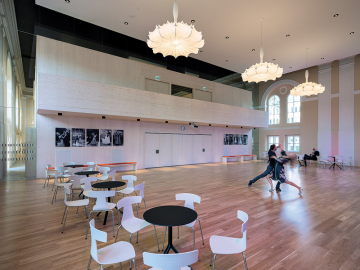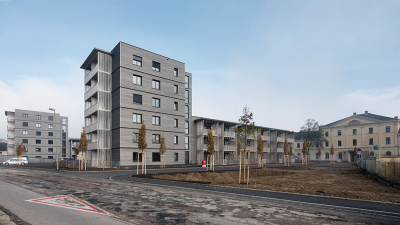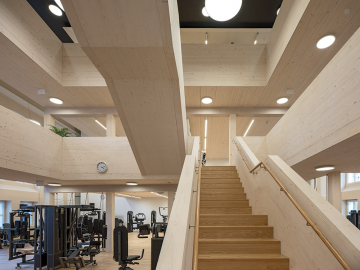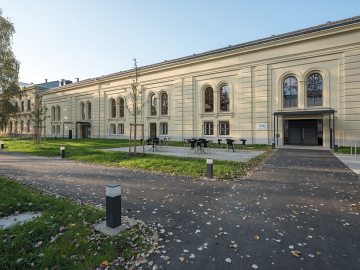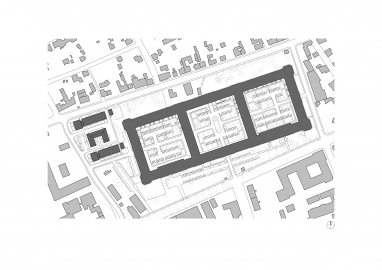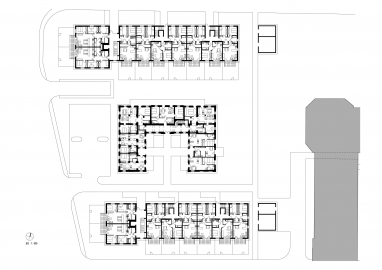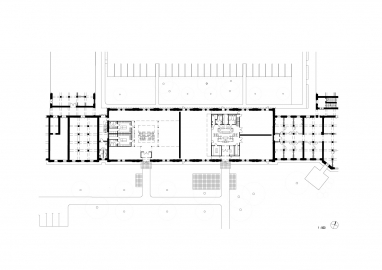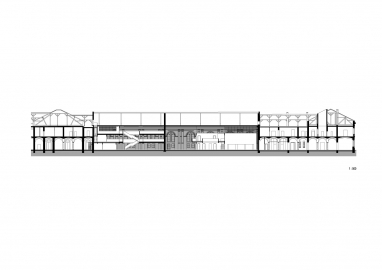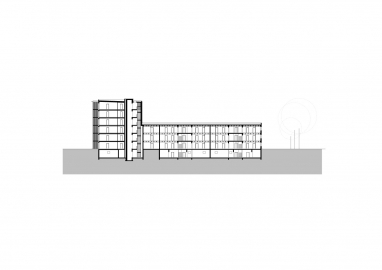Revitalization Dragooncourts Wels
The former dragoon barracks, the largest profane building in Upper Austria, located in the middle of the urban area of Wels, has been accompanied by our office in its redevelopment and renovation for over 15 years.
The new functional and architectural developments initiated by the current owner, WAG Linz, were preceded by extensive preliminary studies on density, residential and commercial use.
As a first step in the revitalization of one of the largest historical buildings in Wels, the former horse stables are being converted into rental apartments. With this delicate monument preservation task, great attention was paid to the preservation of the existing room volumes, with fixtures such as galleries and partition walls being largely made with clearly legible joints.
The large openings to the courtyard are the result of the previous occupant's garage openings that have already been broken out and create lighting conditions appropriate for the new use.
The second component includes the installation of a supervised living group for old people with dementia. The spatial structure is based on the principle of a large single-family house with corresponding common rooms as well as own small residential units including sanitary rooms. The use of natural wood deliberately creates a pleasant room climate.
In the third section, the first commercially used rooms in the Westhof are being revitalized. Here, too, similar approaches of inserting and adding simple building implants are used, just like the first measure.
The east courtyard is currently being adapted for residential use, while at the same time commercially used parts of the east and central courtyard are being revitalized.
The listed complex shows possibilities in many ways. The conversion of the stables into apartments, the integration of shared apartments for the elderly, the use for small and medium-sized businesses, right up to the exclusive dance school. Everything in harmony with the historical building fabric and the new architectural elements we call "implants". Social housing in timber construction complement the edge of the property in the west by integrating a building that was historically used as a horse hospital. A special kind of challenge, a rare task.

